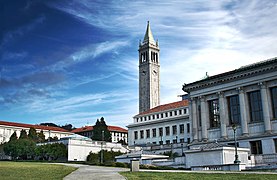The Debate Over People’s Park: Should UC Berkeley Build Student Housing on People’s Park
August 16, 2023
According to RentCafe living in the Bay Area is 79% higher in housing costs than in any other country. This absurd cost of living makes it impossible for UC Berkeley students to afford to live on their own. The majority of first and second-year students rely on on-campus housing during the year. The UC Berkeley Finance Office data records that in 2019, there were 43,204 students enrolled at the University of California. Out of over 43,000 kids, there are only beds for 9,000 students. Since 2019 the student body has grown by 2,103 students. The lack of housing has a profound effect on student life, education, and the city of Berkeley itself. To solve the housing problem, the UC Berkeley campus proposes a plan to convert People’s Park, right off telegraph ave, into student housing. The new housing unit would create over 1,100 dorms for students, states the UC Berkeley Regents office. The housing plan would also incorporate new eco-friendly energy resources and bike spots rather than a parking garage in order to encourage more sustainable modes of transportation.
Though these plans would benefit the school, many Bay Area activist groups are protesting against the project. The location of People’s Park where the new infrastructure would go is a historic landmark. During the 60s when it was first established, the community gathered around the park as a place of learning and love. “It’s a free and open space, a place where the rules of exclusion are very different. So people who were poor, people who didn’t have housing, people who didn’t fit into dominant society in all sorts of different ways could find a space there. And many did.” says Don Mitchell, a professor of human geography at Uppsala University in Sweden. People’s Park holds a deep history of Bay Area activism and counterculture.
One of the most notable events that took place in the park was Bloody Thursday in 1969. Over 3,000 people attempted to march through the city but were stopped by law enforcement, which quickly turned violent. Demonstrators threw bottles and rocks, lit cars on fire and smashed fire hydrants, causing law enforcement to respond with tear gas and shotguns loaded with rock salt and lead bullets. Governor Ronald Reagan declared a “state of extreme emergency,” and sent in 2,700 National Guardsmen. He set a curfew and banned public assembly. A bystander, James Rector, even died of his wounds. In response social groups like the Black Panther Party and the Berkeley Barb paper made pamphlets against fascism, handing them out on the park premises, writes the Black Panther Party newspaper.
As a solution to preserving the cultural significance of the park, UC Berkeley plans to make a monument to the history of the land. UC Berkeley wants to celebrate the vital history of People’s Park in their building plans. They want to cut down as few trees as they can and plan to create a memorial that will document the entire history of the People’s Park land from Native Americans through the riots in the 60s and the 90s.
The housing plan will also make the Park safer. Due to the cost of living many people throughout history have flocked to the space as a sanctuary and living space. In the past, this caused a vibrant hippie community, but in more recent years the park has been used for drug deals and use. In a Los Angeles Times article, Berkeley Mayor Tom Bates, who was a part of the 1969 riots proclaims, “Over time, people have come to realize that the park has not become what they hoped it would be,” he acknowledges the critical role that the park plays in social justice, but also realizes “…right now, it is not a place that a lot of people are comfortable going to.” The new dorm housing would clear the land of the homeless, but UC Berkley realizes the importance of providing care for the people who lived on the land. According to its housing project website, UC Berkeley plans to partner with local community organizations to provide housing for the upended people of the park. One of these projects is to convert the Rodeway Inn, a hotel in the area, into a housing space that provides resources to the homeless in People’s Park. This estimated 6 million dollar plan will provide long-term housing and beneficial recovery resources for the homeless community. This plan will allow people experiencing homelessness to have a safe, reliable space to live in, hopefully decreasing the illegal and dangerous activities in the park.
In summary, the UC Berkeley campus is relying on the housing project in order to provide living facilities for the influx of students that rely on housing. The debate between the project and its cultural significance rages on with no solution in sight. As protests continue it is still unclear whether or not UC Berkeley will be successful.


